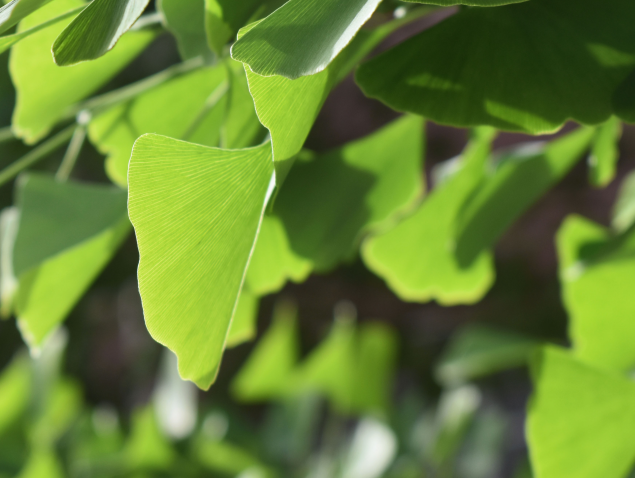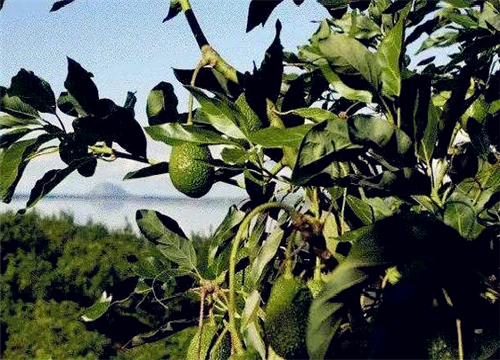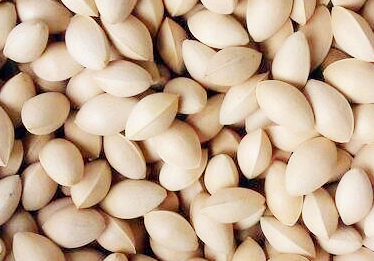Introduction of five matters needing attention in ginkgo planting!
Ginkgo biloba is a big deciduous tree, and its seed ginkgo fruit is also called ginkgo. Because of its high nutritional value, lung qi accumulation and asthma cough, many growers are planting at present, but some growers have encountered some problems in the process of planting ginkgo. Then the editor will introduce to you the five points for attention in ginkgo planting:
I. Seedling selection
The growth cycle of ginkgo trees is very long and the growth rate is very slow, so their growth years are also longer than ordinary trees. then you should be very careful when choosing seedlings, otherwise it is very likely that ginkgo trees will die before they blossom and bear fruit or the survival rate is not high at the beginning of planting. You can usually choose seedlings that are stout, straight, well-developed roots and red, so that the survival rate of high-quality seedlings will be much higher.
2. Planting
The ground needs to be prepared before planting, and holes are dug according to the distance of 3-4 meters between rows and 2-3 meters between plants. The cave is 60 cm deep and 60 cm wide. Sprinkle enough organic fertilizer and cover it with a layer of fine soil with a thickness of about 5 cm. Then put the ginkgo seedlings into the dug hole and fill the soil with water for the last time to make the land have a certain degree of humidity. In this way, the survival rate of planting will be higher and the growth rate will be relatively faster.
Third, lighting
Ginkgo biloba is a kind of light-loving plant, and it is best to have enough light in its growth process, so it should be planted in sunny areas. and it is better to have strong ventilation so that ginkgo trees can fully carry out photosynthesis and grow more healthily, and combined with photosynthesis can accelerate its growth rate, and finally it can not grow in a cool environment for a long time. Because this will make it grow more slowly and the plants will become more and more vulnerable, resulting in a significant increase in mortality.

IV. Fertilizer and water
Ginkgo trees are fertilized mainly with organic fertilizer and farm manure, which can be topdressing twice a year. Attention should be paid to the use of ring fertilization or hole fertilization, which is beneficial to the absorption of nutrients by ginkgo trees and is not easy to be exhausted. in the process of ginkgo tree growth, it is necessary to have enough water, so it is best to water it every 3-4 days.
5. Disease prevention
Ginkgo trees are highly resistant, so there are few diseases and insect pests, but there may also be various fungal diseases such as virus disease or leaf blight and leaf spot disease in the high temperature and rainy season in summer. first of all, the branches and leaves between gardens can be pruned by multi-garden management to enhance the permeability of the garden, and then the excess water will be discharged in time and finally controlled with Bordeaux solution. The most common pest of ginkgo is that grubs can be controlled with trichlorfon or dimethoate milk.
Summary: the above is the introduction of the five major points for attention in the cultivation of ginkgo biloba. Growers can refer to the above five points for attention when planting, hoping to help friends in need!
Matters needing attention in the selection and purchase of Ginkgo biloba seeds Ginkgo biloba, also known as ginkgo, Gongsun tree, belongs to gymnosperms and is the only "living fossil" plant in China. It has long life, strong adaptability, wide use, strong disease resistance and easy to manage. it is an excellent tree species with ecological, social and economic benefits in sustainable utilization. In the process of breeding ginkgo biloba seedlings, seed quality is the key to determine the success or failure of ginkgo seedlings. Therefore, fruit growers should master the following "six essentials" when choosing and purchasing ginkgo seeds.
First, buy new seeds. That is, to buy the seeds harvested from the mother tree of Ginkgo biloba (the mother tree is best if the tree is about 80 years old). Second, buy seeds with good pollination. Cut open the seeds of Ginkgo biloba to see if there is a germ in the endosperm. If there is no germ, it cannot be used to sow and raise seedlings. Third, we should buy the seeds after removing the miscellaneous. That is, to buy seeds that get rid of debris. Fourth, buy seeds of moderate size. Generally speaking, about 400 to 700 seeds per kilogram of ginkgo biloba seeds are more suitable, the seeds collected should be peeled and dried, and it is appropriate to sow in spring after stratification in the north. Fifth, buy seeds from fruit trees. The seed mother tree has good pollination, sound seed structure, high embryo rate, uniform seedling after sowing, strong seedling, strong adaptability and high insurance coefficient after planting. Sixth, buy ginkgo seeds that have been identified by experts or relevant technicians. 1. Bagging. Put the ginkgo into a sack and put it into a plastic bag after sweating for 7 days. The mouth of the bag is not sealed, each bag is not more than 20kg, and the temperature is lower than 5 ℃. It can be stored for 6 months. two。 Water storage method. Put the ginkgo into a clear water tank (pool) and soak it with water. If the water is changed frequently, it can be stored for 4 to 5 months. 3. Sand hiding method. Spread a layer of 10cm thick wet sand on the ground in the cool room, pile 10cm thick ginkgo on top, and then cover it with 5cm thick wet sand, so that several layers can be stacked, the heap height is no more than 60cm, and it can be stored for 3 to 5 months. 4. Cold storage. Put the ginkgo into a sack and put it in a cold storage of 1: 3 ℃. Spray water every 10 to 15 days. Keep it moist and store for 6 months. 5. Storage method. When there are a large number of ginkgo, it can be stored in gunny bags, each bag of fruit 25~50kg, put in the constant temperature storage, under the cushion ventilation rack, the temperature is controlled at 1: 4 ℃, the relative humidity is 90%. During storage, it should be checked frequently and can be stored for more than 12 months. How to plant ginkgo trees? Planting skills and management of ginkgo trees!
Ginkgo biloba is a kind of excellent tree species for both fruit and timber, which is tall and beautiful, and it is also a beautiful ornamental tree species. Ginkgo biloba has strong adaptability to soil, acid, alkali and drought tolerance, and its life span is as long as hundreds of years, even more than a thousand years. The fruit is rich in ginkgolic acid and ginkgo alcohol, which is rich in nutrition and can be used as food or medicine. The leaves can produce "coronary heart ketone" and other medicines, and can also be used as paddy field fertilizers and pesticides. Its wood is light and flexible, fine-grained and not easy to crack, so it is a good material for construction, craftsmanship and furniture.
How to plant ginkgo trees? Planting skills and management of ginkgo trees!
Growth habit
Ginkgo biloba is a deciduous fruit tree with slow growth, late inoculation and long life, which is dioecious and often forms a tall crown with strong dryness and obvious layers. The canopy of real trees is mostly tower-shaped, conical or oval. When the production of grafted trees is blocked without central trunk or central trunk, the crown can begin to be semicircular or happy in the later stage of growth. The branches in the crown can be divided into two types: growing branches and short shrinking branches. The long branch is formed by the upward and outward extension of several buds at the end of the branch, which is the basis of the crown.
The short branch is formed by the buds in the middle and lower part of the branch, and then extends weakly every year. The internodes are extreme, also known as "scale branch" or "milk branch". Under certain conditions, short branches can also produce long branches. Young trees under 10 years old have a higher proportion of long branches, accounting for about 70% of the total branch volume. A tree that is more than 50 years old. The number of long branches decreased sharply, and the proportion of short branches increased significantly, accounting for more than 80% of the total branches, so the crowns of adult trees are often sparse. Sometimes, the hidden buds of old trees or big branches can also sprout directly to form short branches.
After fruiting age, the female flowers and male inflorescences of ginkgo trees are clustered on the short branches of female and male plants, respectively. There are 5 to 14 leaves on short branches, and flower buds can be formed on sturdy short branches with more than 6 leaves. Flower buds are mixed buds, terminal, very short in spring and then blossom in leaf axils. Each shortening branch on the female plant can be inoculated with 2-14 (usually 5-6). The formation of flower buds on short branches is related to the nutritional status of the tree and the age and growth status of the basal branches. Generally speaking, on the base branches of 3-12 years old, the shortened branches bear more fruit, and then the fruiting ability decreases gradually.
The sprouting rate of the long branches of Ginkgo biloba is very high, except for the first top buds, the axillary buds on the other nodes can produce short branches, and form flower buds to blossom and bear fruit, which is very easy to form big and small years. However, the shortening branches on the same basal branch sometimes bear fruit alternately. Male inflorescences grow between axils of shortened branches and leaves, and 4-6 inflorescences can be borne on each shortened branch.
Propagation methods of ginkgo biloba there are many kinds of propagation methods, such as seedling, ramet and grafting, which are widely used in production. The seed-bearing method is late, and the seed seed is small, so it is mostly used to cultivate wood and fruit trees, or to cultivate rootstock seedlings. The seeds can be sown in winter or in spring after sand storage. About 600 kg-750 kg seeds are needed per 1000 square meters of seedbed. The cotyledons of ginkgo biloba seedlings are not unearthed, and the soil cover can be thicker. The growth of seedlings is very slow, and it is suitable for sunshade at high temperature in summer. The lateral root of one-year-old seedling is underdeveloped, and the height of the seedling is no more than 20ml / 30cm. It is not suitable to come out of the nursery or for grafting. Generally, it is necessary to change the bed to cultivate for 2mi-3 years, and wait for the seedlings to reach a height of 60ml / 100cm before coming out of the nursery.
Ramet is the use of ginkgo biloba plant base sprouting, before sprouting in spring 2muri-March. Carry some old roots and fibrous roots, which is conducive to survival. The fruiting age of ramet seedlings is earlier than that of fruiting seedlings, but it takes about 10 years. Ramet seedlings are cultivated, but they are fixed and planted in the field, and they can also be used as sticky wood for grafting. The ramet should be selected from the root of the female plant.
The cuttage survival rate of Ginkgo biloba is lower than that of tree species which are easy to root, but cutting propagation can save seeds and expand seedling sources. The cutting method is divided into hardwood cuttage and green wood cuttage. Hardwood cuttings selected annual branches as cuttings, cut into about 20 cm, the lower end cut into horseshoe shape, with 30/1000000 to 50/1000000 acetic acid solution (the effective ingredient of rooting agent) treatment of 12murmuri for 24 hours, or soaked in 50 ppm ABT-1 rooting powder for 1 hour, and then cut into the soil with a depth of about 10 cm.
The ginkgo trees propagated by grafting bear fruit early, and the tree body is short, so it is easy to manage. In the past, high stem grafting with large rootstock was often used in producing areas, which was not conducive to a large number of rapid seedling breeding and garden establishment. At present, seedling grafting is popularized in production, that is, 2-3-year-old rootstock seedlings are grafted at a lower position 30 cm-50 cm above the ground, and one-year-old branches are used as spikes. There are two main grafting methods: split grafting and subcutaneous grafting. The grafting period is from mid-late March to early April.
Planting and management
The open land with deep soil layer and good drainage should be selected in the garden where ginkgo biloba is planted. It is not suitable to build a garden where low-lying moisture, heavy salinity and heavy soil are not suitable. The planting distance can generally be 4-5 meters, such as the implementation of planned close planting can further reduce the plant row spacing. The Ginkgo biloba leaf-picking orchard is built with highly close planting, with a row spacing of only 0.7 Muthi 1 meter. Ginkgo trees planted sporadically on the four sides can form large crowns, and the row spacing can be expanded to 6 Mel 8 meters. The root system of Ginkgo biloba recovered slowly after injury, and the larger the seedling was, the longer it took to resume growth. Planting and transplanting seedlings should damage the root system as little as possible, so as not to lengthen the slow seedling stage and affect the growth and fruiting.
How to plant ginkgo trees? Planting skills and management of ginkgo trees!
The above contents are the planting skills and management methods of ginkgo trees. I hope they can help you! Besides! Ginkgo tree growth is slow, strengthen soil fertilizer management, can accelerate growth, according to the initial discretion to increase the amount of base fertilizer, topdressing 1-2 times before sprouting, in order to promote the growth of new shoots, applying 0.8 kg-1 kg compound fertilizer or pouring manure from mature people. Ginkgo avoid wet waterlogging, rainy season should pay attention to ground drainage.
- Prev

How to plant avocado trees? How many years of planting can it bear fruit?
Avocado everyone has seen in the supermarket, the fruit is green, looks like an immature citrus, the general fruit store sells 15 yuan each, its nutritional value is very high. Therefore, many fruit growers want to grow avocado trees to make money, but at present, many people do not know how to grow avocado trees.
- Next

How much is the ginkgo seed per jin? How do you plant it?
Ginkgo tree is the old birthday boy in the tree, its life is very long, and its seed is also called ginkgo, so ginkgo is also called ginkgo tree. Because ginkgo biloba has ornamental, economic and medicinal value, and its fruit ginkgo fruit has high nutritional and medicinal value, it also makes many growers want to plant
Related
- Fuxing push coffee new agricultural production and marketing class: lack of small-scale processing plants
- Jujube rice field leisure farm deep ploughing Yilan for five years to create a space for organic food and play
- Nongyu Farm-A trial of organic papaya for brave women with advanced technology
- Four points for attention in the prevention and control of diseases and insect pests of edible fungi
- How to add nutrient solution to Edible Fungi
- Is there any good way to control edible fungus mites?
- Open Inoculation Technology of Edible Fungi
- Is there any clever way to use fertilizer for edible fungus in winter?
- What agents are used to kill the pathogens of edible fungi in the mushroom shed?
- Rapid drying of Edible Fungi

